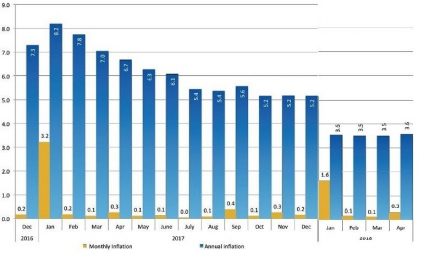
There is a distinct possibility that Neckartal may fill up (almost) in the first year after its completion

The image above from Namwater shows the surveyed highwater line of the Neckartal Dam. When this new water source reaches maximum capacity, it will cover about 45 km2, reach upstream some 22 kilometres and hold an incredible 857 million cubic metres of water. That is 857 billion litres of water.
To deconstruct the Neckartal phenomenon from all the political clutter that has clouded its construction, the raw statistics must first be placed in perspective.
At 857 million cubic metres content, it is nearly eight times bigger than Windhoek’s two main water sources, Von Bach and Swakoppoort combined. Von Bach with a capacity of 47.5 million cubic metres is not a very big reservoir by international standards but neither is it small like Goreangab or Friedenhau, for instance. It is still a respectable size and comfortably exceeds the minimum size for what engineers would deem a utility dam. Swakoppoort at 63.5 Mm3 is roughly 30% bigger than Von Bach but its water is more expensive. Every litre that reaches Windhoek must first be pumped back to Von Bach and that raises the costs since electricity is an expensive operational item. Together the two provides Windhoek with a primary water source capacity of 111 Mm3.
Compared individually, Neckartal is 18 times bigger than Von Bach and 13.5 times bigger than Swakoppoort. Since we know from experience that the Von Bach Swakoppoort combination can carry Windhoek for at least three years before acute water distress arises, it implies that, were Neckartal’s water to serve Windhoek only, it will constitute a reliable water source for some 25 years. Now that is something to think about when we make our calculations to determine the cost of getting desalinated water from the coast to Windhoek.
Another interesting fact sent to me over the weekend, is that Neckartal is roughly the same size as all five major dams together that serve the Cape Town metropolis and just over double the size of Theewaterskloof Dam, the main water source for Cape Town.
The rainfall blessings we have received so far is almost unprecedented, particularly for the arid south. And despite all the damage caused to infrastructure and the threat of more flooding, it has given us another blessing which is purely statistical.
Let’s say for argument’s sake, the good rainfall conditions continue and by some miracle, Neckartal fills to the brim in this single season, then it suddenly confronts us with the reality of what are we going to do with all this water. All the earlier projections I have seen were based on a scenario that Neckartal would need about seven “normal” years to fill, if it would ever be 100% full. Now it seems like a possibility that it may collect a very substantial portion of its full capacity in only one season.
Consider this. As of Monday 11 January, Neckartal was 48% full with 410 Mm3 water but already it held more than double the volume of water in Hardap which was fast nearing 70% full.
According to project engineers, Knight Piésold, the Neckartal scheme makes provision for about 2000 hectares of irrigation land, which can later be expanded to 5000 hectares. This is a sizeable area under irrigation and can contribute significantly to various forms of agricultural production. In short, the planned land under irrigation is sufficient that, in future, it will be able to carry and sustain various agro-industries. This was after all the very first line of thinking of the German colonial government when Neckartal was first proposed and surveyed in 1907.
Part of the current planning also includes a modest hydro-power facility, mostly to provide the electricity that will be required to pump Neckartal’s water to where it is needed for irrigation. So, in essence, Neckartal is not going to solve our energy woes but it will be able to take care of the scheme’s local energy requirements.
Given the arid environment in which the dam is located and the fickleness of the typical Namibian rain season, it will be a mistake to assume that Neckartal will always be full, or full enough to be regarded as a sustainable utility. But looking at the impressive statistics above and its sheer size, it is not unreasonable to work on the assumption that Neckartal will always have sufficient water to supply the irrigation scheme, and to last from season to season, even during the driest spells.
This got me thinking. If it is 18 times bigger than Von Bach, and if there is a reasonable hope that it will contain enough water most of the time: – Why not pump back some of that water to Hardap and from there to Oanob, and from Oanob to Windhoek.
It is not as if Neckartal’s water will be used to supply 100% of Windhoek’s needs, but it can be a relatively cheaper option to develop another water source for the capital. By this I do not mean that we must shelve our plans for desalination, or linking the Karstveld to the Kavango, but only that we can build a 500 kilometre pipeline over relatively flat terrain and that we need to elevate the water only by 800 metres as opposed to the 1600 metre elevation between the coast and Windhoek.
On the financial side it will also produce positive spin-offs. Water is our number one problem and whether we make large investments to get it from the coast or from a reservoir in the south, in the end we shall have to make those investments. With a pipeline from Neckartal to Windhoek, we substantially increase the investment value of future infrastructure projects, thus drawing the attention of international and institutional investors.
It is only a matter of somewhat more ‘liquid’ thinking.










































